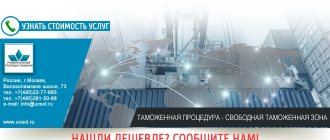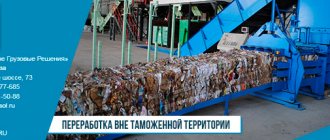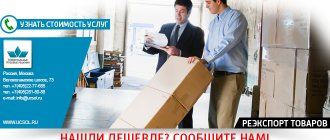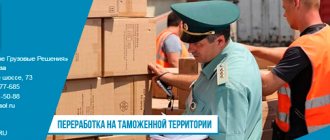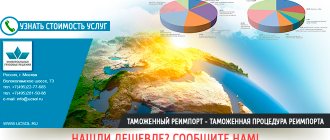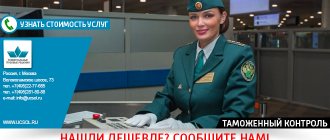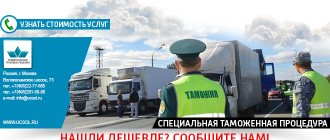HomeCustoms clearanceCustoms procedures Free customs zone
A free customs zone is a customs procedure (formerly: customs regime) applied on the territory of a Free Economic Zone - SEZ , and provides for the provision of registered participants in foreign economic activity (residents) with benefits in the payment of customs duties, taxes, special, anti-dumping, countervailing duties. FEZ residents are registered legal entities and individual entrepreneurs conducting economic activities in this territory. Another name applicable to free economic zones is Special Economic Zones (SEZ).
The customs procedure code for free customs zone is 78, it is indicated when filling out column 1 of the customs declaration by a legal entity or individual entrepreneur during electronic customs declaration.
If the goods are placed in a free customs zone, in column 1 you need to indicate IM 78 , and if the goods are exported from a free customs zone, then indicate EC 78 .
Example of filling out Column 1:
|
More details about filling
The main goal of the SEZ is to solve the problems of socio-economic development of certain territories of our country, or certain sectors of the economy through the targeted attraction of foreign investment, technology, and production. Enterprises operating in the territory of the FEZ are provided with tax benefits, as well as benefits on the payment of customs duties. Goods imported by them from abroad or from the rest of the territory of the Customs Union are exempt from the application of non-tariff regulation measures and customs control measures to them. There are 4 types of SEZ in the Russian Federation:
- Industrial and production;
- Technical and implementation;
- Tourist and recreational;
- Port.
They are located in different regions of the country: Altai Territory, Buryatia, Tatarstan, Astrakhan, Irkutsk, Kaluga, Lipetsk, Moscow, Pskov, Samara, Sverdlovsk, Tver, Tomsk, Tula and Ulyanovsk regions, as well as in Moscow, St. Petersburg. In total, there are 26 SEZs in Russia and work is constantly underway to open new ones. In 2021, the total number of SEZs in Russia was approaching 27.
Types of benefits
Benefits on taxes and fees.
The benefits that the state provides to residents of the FEZ depend on the type to which a particular free economic zone belongs.
- Residents of industrial and tourist zones are allowed accelerated depreciation;
- Residents of technical FEZs are allowed to establish reduced insurance premiums;
- Operations and services of port zone residents are not subject to VAT.
Benefits for the payment of customs duties and fees do not depend on the type of SEZ, but depend on the origin of the declared goods: for foreign goods one set of benefits for the payment of customs duties and fees is provided, for goods of the Customs Union - others, and for processed products (goods received in during the use of foreign goods and goods of the Customs Union) - third.
General benefits.
- For all residents, the tax rate on profit (that part of it that is credited to the budget of a constituent entity of the Russian Federation) has been reduced;
- Transport tax benefits (begin to apply from the moment of registration of transport in the territory of the FEZ);
- Exemption from land tax for a period of 5 to 10 years (the duration depends on the type of zone);
- For residents, the property tax is abolished if it is acquired within the boundaries of the zone, operates in the zone, or is created for unhindered work in the zone.
We remind you: tax and customs benefits are provided only to registered organizations - residents of the FEZ.
What is a free customs zone
A free customs zone is a special model for organizing a customs regime, in which products are imported/exported within this zone abroad with significant benefits on taxes, duties, and customs payments. At the same time, the movement of products does not occur within the framework of non-tariff regulation of foreign economic transactions, and locally produced goods enter the free customs zone using established tax rates and customs duties, but non-tariff regulation is also used.
The content of the concept of customs procedure free customs zone includes:
- the presence of preferences for participants in foreign economic activity (foreign economic activity) on customs payments and internal taxes;
- the possibility of carrying out production, economic and economic activities in a free customs zone;
- the ability to sell goods on foreign and domestic markets.
The attractiveness of a free customs zone for the state lies in receiving income from attracted investments aimed at creating and expanding production capacities and specific types of commercial activities.
Meaning. The formation of free customs zones is an effective measure aimed at expanding trade relations and the emergence of new, well-paid vacancies in the labor market. As a result of such processes, a free customs zone has a positive impact on the economy in general and social development in particular.
The source of international legal regulation, on the basis of which free economic zones and customs unions operate, is the Kyoto Convention “On the Simplification and Harmonization of Customs Procedures,” which was adopted back in 79 of the last century.
Russia has not yet joined the updated version of the above conference. But it should be noted that the principles by which a free customs zone of the Russian Federation can be created, operated and closed, reflected in the laws of the Russian Federation as a special customs regime of a free zone (free warehouse), correspond to the norms of Special Appendix “D” of the Kyoto conference.
A distinctive characteristic of the free customs zone (free warehouse) regime is the absence of definitions for such a regime in the Code of Russia (LC RF). The norms of a free economic zone are established by the Russian Law on legal relations related to the application of the free customs zone regime (free warehouse). The effect of this provision remains in force, since Chapter 12 of the Russian Labor Code, which defines it, remains in force until the appearance of a separate Federal Law aimed at regulating legal relations in matters of applying the free customs zone regime.
- Customs clearance in international trade
Customs territory
This concept is central to topics related to international trade and investment, as they involve goods, services and capital crossing national borders. The customs territory represents the entire land, air and water space of the country. It may also include artificial islands, structures and installations. According to the Customs Code of the Customs Union of the EurAsEC, the customs territory includes the land, air and water spaces of Russia, Armenia, Belarus, Kazakhstan and Kyrgyzstan. It also includes all artificial islands, structures, installations over which these states have exclusive jurisdiction.
Free customs zone procedure and its application
The customs procedure of a free customs zone has its own characteristic features, namely that non-tariff regulation measures are applicable to imported products falling directly under it, as well as prescribed payments, as for goods placed outside the Customs Union (CU) zone. But, at the same time, it is necessary to take into account that the free customs zone of the Customs Union also directly acts as an integral element of the Customs Union, and can be defined as a territory for customs control.
A free customs zone, acting as a customs procedure, has the following essence:
- Products that are located directly within the boundaries of the free customs zone are exempt from customs payments and non-tariff regulation measures for products produced outside it, as well as from restrictions applied to customs goods.
- Products to which the free customs zone regime is applicable retain the status of foreign, and CU products retain the status of CU goods.
- In the territory of free customs zones, they operate as residents of legal entities and individual entrepreneurs, the registration of which was carried out by government agencies of the countries participating in the Customs Union in compliance with the legal acts of a particular state, subject to inclusion in a special register of special zones.
Based on Article 9 of Federal Law 166 dated July 22, 2005 “On Special Economic Zones in the Russian Federation,” the following requirements for enterprises have been formed for inclusion in this register:
- A necessary condition is registration with the municipal authorities of the region where the free economic zone is located;
- It is necessary to have an agreement on carrying out commercial activities in a free economic zone with the structures that manage such a zone.
The customs procedure of a free economic zone may have other varieties provided for by the Agreement. These are the Port and Logistics free economic zones. For the legal field of the Russian Federation, such terms are still relatively few common concepts.
Port free (special special) economic zone – is formed in a sea/river or air port, which are intended for international transportation, as well as in the territories adjacent to such facilities. At the same time, the constituent elements of ports and airports, on the territory of which facilities that solve the problems of passenger transportation, are located, cannot fall under the procedure of free economic zones.
Logistics free (special special) economic zone - can be formed within the territory of the country of a free customs zone near the railway or automobile checkpoints of the Customs Union. The peculiarities of the under-front varieties of free economic zones lie in the control procedure. The application of the customs procedure of a free customs zone in this case does not require declaration (at the same time, declaration is applied for products that are not related to logistics and port groups). In order to place products according to the procedure of such a customs zone, a contract for warehouse services and related unloading and loading operations must be drawn up. A free customs zone (a free warehouse) is applicable exclusively for operations that are related to the entry of products within the customs zone of the Customs Union.
Since port/logistics free economic zones are located at the customs borders of the Customs Union, when moving products located on the territory of special economic zones within the Customs Union, they must be declared and placed under the appropriate customs procedure.
If the products are located in a special customs zone that is not related to port/logistics economic zones, any operations are allowed provided that:
- If this is included in the current contract for conducting operations within the free economic zone;
- If the activities carried out are related to the warehousing, processing and storage of goods, or with the execution of agreements for their alienation.
The customs procedure can be considered valid within the period of existence of the free economic zone for the period of validity of the resident status for the entity placing the products under such a procedure. In addition, the termination of the customs procedure of a free economic zone may be carried out if a special decision on such a fact comes into force.
Customs Union and Free Customs Zone
The main difference that customs unions and free trade zones have is that CU members, along with the elimination of tariff quotas in economic relations, set policy standards in the field of foreign trade operations with third countries. This involves the formation of standard uniform tariffs along the perimeter of the borders of the Customs Union. Thus, the CU policy involves replacing several customs zones with one territory. In this case, the internal customs services are abolished with the transfer of their powers to customs located on the borders of the common customs zone. As an illustration of such a CU, we can cite the European Union, which began to take shape back in 1968 as the EEC.
This option changes (free customs zone) the conditions for the direction of product flows and contributes to the reorientation of CU members towards the import of goods from states participating in the agreement. In the future, this leads to transformations in the production and consumer spheres.
Despite all the logic and completeness of such an education as the TS, it also has its own contradictions. Concentrating solely on international trade relations leads to the need to transform into a more advanced organization of economic and trade unions.
The agreement on free zones of the Customs Union, which are considered as economic communities of countries, is based on the principles:
- the existence of a common customs territory of the CU countries, which is formed on the basis of the absence of duties and customs fees on equivalent terms for all contracting countries;
- in relation to third countries, a single trade regime, common tariffs and norms of non-tariff regulation of foreign trade transactions are established and applied;
- creation of a system of interactions between the Customs Union and third countries;
- establishment of a unified mechanism of economic regulation based on market conditions for conducting business and economic activities and a common legislative framework.
The parties to the agreement on a free customs zone determine the goals of creating a customs union:
- joint creation of conditions for social and economic progress by eliminating factors that impede open economic cooperation;
- creating basic conditions for stable economic development, open exchange of products and fair competition;
- coordination of political decisions in the field of economics of the agreement states and assistance in improving the national economy;
- providing prerequisites for the creation of a unified economic system;
- implementation of measures to facilitate the rapid and effective entry of CU countries into international markets.
The creation of a free customs zone of the Customs Union is the most important stage in the process of achieving the goals of economic integration of the participating countries. It should be noted that closer integration of economies on the basis of a free customs zone ultimately leads to the transfer of some state functions to interethnic structures, and, consequently, contributes to a partial renunciation of state sovereignty. Given this development of the situation, some countries are abandoning the principles of a free customs zone, preferring to carry out trade and economic relations under bilateral agreements.
The solution in this case may be integration of states based on pragmatic principles. At the same time, the accession of states to the agreement on a free customs zone does not occur simultaneously, but gradually, with a gradual expansion of the community. An example of such a process can be the stages of integration of the Russian Federation and Belarus. At the beginning of 1997, an agreement was concluded on the creation of the Union of the Russian Federation and Belarus, and the charter of this association was adopted, which emphasized the Union’s focus on the gradual integration of countries.
In the period from 1999 to 2001, a number of acts appeared confirming the completion of the processes of creating a free customs zone of the Union, documents were signed on the formation of security principles for the unification of the Russian Federation and Belarus, bodies such as the Supreme State Council and the Council of Ministers were created, and intentions were formed to introduce a single currency and creation of a single emission center of the Union.
In order for the project of a free customs zone and the creation of the Union to be implemented in practice, a reliable economic foundation is needed, which is built on the gradual implementation of the stages of integration, including the creation of a free customs zone and a monetary Union. A necessary condition for the implementation of intentions to integrate the Russian Federation and Belarus within the framework of a free customs zone is mutual economic interest, which does not contradict the political courses chosen by these states. Each member of the Union has its own geopolitical interests, on the basis of which relationships within the Union are built.
- Customs transit: simplified passage scheme from ICC
Prospects for the development of the regime in the Russian Federation
The experience of foreign countries shows that the main problem when creating a SEZ is the wrong choice of location of the zone, ineffective institutional connections between government bodies involved in the functioning of preferential regimes, and the underdevelopment of basic infrastructure elements (transport, electricity, telecommunications). You need to understand that the region itself will not begin to develop after the start of application of the Free Trade Zone procedure. Social plan zones need to be allocated separately. It is also important to reduce the number of administrative barriers. Paperwork and bureaucracy never contribute to the successful functioning of free customs zones. The consistency of the state’s political course is also important, as evidenced by the duration of the provision of benefits. World practice shows that when creating a free trade zone, one must be guided by the following principles:
- activation of entrepreneurship;
- profitability of investment;
- competitiveness of business in comparison with other territories thanks to modern forms and methods of organizing activities;
- unity of entrepreneurial and managerial initiative, compliance of the SEZ structure with real economic conditions;
- the presence of a well-developed legislative framework.
Termination of the functioning of the free customs zone
If a decision is made to terminate the operation of a free customs zone, the customs procedure must be applied to products located in such territories for a period of four calendar months. At the same time, some goods may be recognized as products of the Customs Union, which are not subject to customs control without making the required payments. This category includes equipment located in the free customs zone, which was put into operation and used as part of the fulfillment of contractual conditions for the activities of the economic zone, as well as products involved in the construction of real estate in this territory.
The same procedure may be applicable in the situation of termination of the functioning of a free customs zone due to the loss of resident status due to compliance with contractual norms regarding the procedure for activities in the free customs zone.
Analyzing the above, it is fashionable to note that the loss of the status of a free customs zone depends on the decisions taken by the state. bodies of the TS. If a resident imported equipment within the free customs zone and did not put it into operation (regardless of the reasons) when the activities of the special zone were terminated, then this product is necessarily placed under customs procedures. Since this condition involves financial losses associated with the payment of customs duties, the resident may decide to export products from the Customs Union zone.
Considering the dependence of residents of the free customs zone on government decisions. authorities, we can talk about the impact of the procedure for terminating the activities of a free customs zone on its attractiveness from the point of view of investment risks.
Since there are certain preferences for products used in the construction of real estate, there is a need to develop an understanding of the essence of such products. It is necessary to clearly describe whether the materials from which building structures are erected fall into this category, or whether a variety of construction equipment can be included in this category. The lack of clarity in this definition makes it difficult for residents who decide to invest in the construction of real estate within the free customs zone to make decisions.
Operations with goods
As we have already said, a free customs zone is a separate procedure within the SEZ. Its regulation is contained in the regulatory framework of the EurAsEC CU. Import of goods into the warehouse territory is possible only after the resident has provided information about them in writing. On the territory of the Free Trade Zone you can inspect and measure goods, as well as take all necessary actions to ensure their safety. Subject to the existence of an agreement on the implementation of activities in the FEZ, persons authorized in relation to the products can process the products, assemble them, prepare them for transportation and further sale. Transactions may be made in relation to goods that provide for the transfer of ownership rights to them.
Free warehouse and free customs zone
The concept of a free warehouse presupposes the formation of a free customs zone, distinguished by a highly specialized profile. Basically, now this form of special zones has found application in the automotive industry, but according to experts, this type of free customs zone will be in demand for large-scale projects in most economic sectors.
At the end of April 1998, the Government of the Russian Federation adopted a resolution “On additional measures to attract investment for the development of the domestic automotive industry”, as well as a Regulation on the peculiarities of legal regulation of the customs regime of a free warehouse. Based on the materials of this resolution, we can derive the following interpretation of the term “free warehouse” - this is a certain production, the perimeter of which is reliably fenced, and all measures have been taken to exclude the export of products outside the free customs zone without special control from customs.
A free warehouse is established on the basis of regulations of the Government of the Russian Federation. One of the grounds for such a decision is the submission of an agreement on the implementation of large investment projects for a period of five to seven years. Imported products necessary for the production of products enter the territory of the free customs zone without collecting customs payments and taxes within the free warehouse where the finished goods are released.
Termination of the free customs zone regime in relation to a free warehouse is applied for domestic consumption of manufactured products without payment of various payments, subject to compliance with quotas on the quantity of products, which are established on the basis of decisions of the Government of the Russian Federation and the requirements of the state of origin of goods necessary for the production of products in the territory of the free customs zone.
The purpose of creating the vehicle
The Customs Union refers to contractual relations between several states related to the creation of the most favorable conditions for the exchange of goods between them due to the reduction of customs duties and other payments.
Members of the union create interstate bodies to coordinate foreign trade policies. The Customs Union is a deeper form of integration compared to free trade zones. There are about a dozen customs unions in the world, among them the EAEU Customs Union. Initially it included 3 countries:
- Belarus,
- Kazakhstan
- Russia.
In 2015, the formation of the EAEU was completed, and Armenia and Kyrgyzstan joined the customs union.
Labor migrants to Russia from states participating in the Customs Union do not need work patents; in terms of labor rights, they are equal to citizens of the Russian Federation. It is known about the intentions of Syria, Tunisia, Uzbekistan and Turkey to join the CU. Moldova has been in observer status for more than 3 years.
The principle of shared distribution of customs duties is presented in the table.
| Russia | Belarus | Kazakhstan | Armenia | Kyrgyzstan |
| 85,33% | 4,55% | 7,11% | 1,11% | 1,9% |
The CU is intended to serve as an important tool for uniting the economies of the countries of the former Soviet Union. Since 2010, members of the CU EAEU have been operating on the basis of a uniform Customs Code for all countries. Article 49 provides for the following customs benefits:
- to pay import and export duties;
- to pay taxes;
- exemption from customs duties.
Benefits other than import customs duties are established in the legislation of the CU member countries.
Participation in it allows you to:
- simplify bureaucratic procedures related to the import and export of products;
- improve product quality due to competition within the union;
- increase trade turnover between participating states;
- freely exchange labor resources;
- cancel customs duties;
- unify the standards applied in the field of product assessment.
For the states that are part of the EAEU Customs Union, the results of increasing foreign trade turnover in 2021 have been summed up. The percentage of its growth is reflected in the table.
| Russia | Belarus | Kazakhstan | Armenia | Kyrgyzstan |
| 22,4% | 23,7% | 21,7% | 32% | 24,7% |
The EAEU countries took an active part in creating a free trade zone with Iran, Vietnam, Serbia, and Singapore, but benefits and preferences in foreign trade with these countries are significantly less than within the CU.
The problem of operating a free warehouse on the territory of the Russian Federation
In practice, the operation of a free customs zone on the condition of a free warehouse in the Russian Federation is associated with a certain problem, the reason for which is the lack of rules defining the provision of tax preferences for VAT and excise taxes for the free circulation of products for domestic consumption.
There are several free customs zones in the Russian Federation, operating on the principle of a free warehouse. These are special zones of Ford Motor Company CJSC (established in 2002), the Chinese customs terminal Druzhba opened in 2006), etc. The most important role in the formation of free customs zones is given to providing the necessary conditions for attracting investment. This point is especially important at the initial stages, when in order to attract additional resources to the economy, clear guarantees from the state should be established for participants in foreign economic activity. organs.
To reduce investment risks associated with changes in political courses (including in relation to customs policy), Russia adopted the following legislative acts Federal Law 160 (07/09/99) “On Foreign Investments in the Russian Federation”, as well as Federal Law 39 (02/25/99 as amended 07.24.07) “On investment activities in the Russian Federation, carried out in the form of capital investments.”
- International trade law: principles and features
Problems
Analyzing world experience, we can identify several mistakes in the creation of free trade zones. Among them:
- Lack of clear elaboration of the goals and objectives of the functioning of the Free Trade Zone.
- Mixing foreign economic and investment aspects.
- The absence of a separate government authority that would regulate the import of goods into the territory of the Free Trade Zone.
- Inflated scale of land allocation for the creation of free customs zones.
- Lack of a preparatory period during which the economic infrastructure is being established in the region, and a financial and economic justification for the creation of a free trade zone in a specific region.
